In June, DC Comics kicked off the start of its Rebirth initiative. After a wave of criticism surrounding the way they have treated their characters’ rich histories since 2011’s New 52 relaunch, DC has decided to rebrand. They hope that by restoring their characters’ pasts, they will restore readers’ faith in them as well. Do they succeed? That’s what the Comics Beat managing editor Alex Lu and entertainment editor Kyle Pinion are here to discuss. Book by book. Panel by panel.
Note: the review below contains **spoilers**. If you want a quick, spoiler-free buy/pass recommendation on the comics in question, check out the bottom of the article for our final verdict.
 Cyborg: Rebirth
Cyborg: Rebirth
Writer: John Semper Jr.
Penciller: Paul Pelletier
Inkers: Sandra Hope & Tony Kordos
Colorist: Guy Major
Alex Lu: Cyborg, aka Victor Stone, is one of the most interesting characters in the DC universe, but almost none of the intrigue comes from his own story. Best known to me for his presence as a core member of Cartoon Network’s Teen Titans series from the mid-2000s, DC has recently seemed to place more weight on the character than his prestige might really warrant. Even more than 30 years after his debut, he hasn’t been on many solo adventures and his character is not nearly as fleshed out as those of the other core Justice League members. Enter John Semper Jr.’s and Paul Pelletier’s Cyborg: Rebirth, which unsuccessfully attempts to build some intrigue and new thematic groundwork for the character.
The core problem with Cyborg: Rebirth is that it is a slog to read through. The story focuses on Victor’s fight with a rogue AI attempting to gain access to a secret facility in S.T.A.R. Laboratories. Throughout the fight, a mysterious villain is probing Victor’s fighting capabilities and family history. We get a look at the life story of his parents leading into Victor’s birth and eventual rebirth as Cyborg. It’s not necessarily a poorly structured comic, but the paint-by-numbers method of storytelling Semper employs to tell Cyborg’s backstory leaves the reader feeling like they just sat through a 20 page lecture. We learn so much about Cyborg’s and his father Silas’ life stories, but we know almost nothing about who they are as people. How does Cyborg feel about anything? It’s an important question that Semper never bothers to answer. How does Silas feel? Well, he’s sad that his wife died as the cheesy “noOOOoooOO!” he employs indicates, but he never seems to express any other real emotions throughout the book.
This lack of feeling is most egregious at the climax of the story where Cyborg faces off against the AI in a hidden room of S.T.A.R. Labs. Silas emphasizes that it’s important that Cyborg stop the AI from accessing the secret hidden in that room, which turns out to be the code that programs Cyborg’s existence. That code comes with a distraught confession from Silas about how he doesn’t know whether or not Cyborg is really his son or just a “Frankenstein’s Monster” imitation of Victor. Silas should feel concerned that his son might find that recording, yet he seems to easily buy Cyborg’s word that the room’s secrets were never breached. Cyborg himself seems upset by the confession, but honestly I’m not sure why this is Cyborg’s central question to begin with.
Kyle, have you ever actually wondered whether Cyborg has a soul? He seems pretty damn human to me…
Kyle Pinion: The funny thing is, during the Wolfman/Perez days, I basically never concerned myself with that question because Victor appeared much more human, with more exposed flesh. Back in my early comics reading days, he just looked like this muscular guy with some cybernetic parts. The idea that he wasn’t human never really occurred to me. Now we’re at this point, thanks to his newly birthed “headliner” status in the New 52, that these sorts of dilemmas have to be presented. That’s understandable on its face, and going the sort of Robocop route isn’t a bad direction for the character. His technical abilities fill a great niche on the Justice League, and a sort of “am I still human?” quandary is a pretty good place to begin a new series for the character.
All that is for naught though as this book is rough going.
I’m sure this is a tough nut to crack given how much groundwork has to be laid here. Cyborg has no real villains to speak of, and his supporting cast is pretty much nil besides his father. That’s the big problem when you neuter your protagonist’s already established past, you have to build something else to act as the foundation. David Walker ran into these same issues in the first attempt at a solo title launch, and it fell on Victor’s real-life creator Marv Wolfman to come in and close things off before this new volume. And while many other characters like Superman and Wonder Woman are finding their collective status quos are shifting towards their most populist or iconic presentations, Cyborg’s Rebirth is basically more of the same, and honestly, his background on his mother aside, there’s little to be introduced here that we didn’t already cover just a year ago, and just a few years before that in Justice League. Again, that’s fine, you need to have a character introduction of some sort for anyone coming in cold, but like you said, Alex, this was a tough read, and much of it came from Semper’s very old school approach. Stiff and unnatural dialogue being the biggest sticking point for me, much like the Bensons over on Batgirl and the Birds of Prey, his transition from television – where you have to pitch to the broadest possible audience in character interactions and internal monologues – to modern superhero comics comes is pretty clunky here. The cringe-worthy stack up too, that “I hack back!” line is particularly groan-worthy.
To give Semper some credit, he’s got some cute scene-to-scene transitions, that play to the better aspects of his television background, and Paul Pelletier puts in some good, if fairly anonymous, pencil-work. But overall, I just thought this was a really dull, uninspired effort that does little other than convince me that maybe nobody knows what to do with Cyborg when he’s not a Teen Titan. Or better yet, why does he keep fighting other robot guys? If you’re gonna go cerebral, go cerebral! Cyborg’s biggest weakness could be his greatest strength. Or better yet, the movie is connecting Victor’s creation to Mother Box technology, playing with that connection seems like the most promising avenue that’s literally right there to be teed off of. Cyborg vs. The Fourth World, come on, this just writes itself!
But hey, I’m not here to give DC free ideas (unless they wanna hire me to revive Sword of Atlantis, The Legion of Super-Heroes, or Hawkman anyway). Alex, does anything want to make you read this book any further? Do you think there’s someplace worthwhile that these story threads can go? Is Semper the guy to do it? I’ll let you be the final arbiter…
Alex: Calling me the “final arbiter” makes me sound a bit pompous, don’t you think? Or perhaps the genesis of a new Fourth World villain…anyways, I can’t really say I see much hope from the series based upon Cyborg: Rebirth. There simply isn’t anything captivating about this creative team’s take on the character. I don’t hate Pelletier’s art, but his pencils are very much in the vein of DC’s traditional “house style,” which I’ve never been a proponent of. It’s too representational and stuffy to allow for real creative play. Semper’s dialogue is clunky and his premise is either old hat or poorly executed depending on the lens you view it from.
I’d give Cyborg: Rebirth a definite pass. My one caveat to this is that we’ve noted several times before that the Rebirth one-shots do not always provide an accurate representation of the quality of the main series. Kyle, we both enjoyed the Batgirl and the Birds of Prey: Rebirth issue even though we did not like the first issue of the main series. Perhaps we could see Cyborg take the opposite track when its proper first issue debuts.
 Supergirl #1
Supergirl #1
Writer: Steve Orlando
Artist: Brian Ching
Colorist: Michael Atiyeh
Alex: Coming off of Supergirl: Rebirth, I felt surprisingly unexcited about the debut of Steve Orlando’s and Brian Ching’s main series about the girl of steel. While Supergirl: Rebirth wasn’t bad, it made some strange choices by resetting Kara Zor-El’s character back to a state of tabula rasa, removing her previous connections to the DC Universe and haphazardly infusing elements of the CW television show into the comic’s canon. Luckily however, after reading Supergirl #1, my outlook on the future of the series is much brighter.
The core question Orlando and Ching aim to explore in the first issue is a resonant one: “what does it mean to be a young immigrant?” In asking this question, the reasons for resetting Kara’s character become more clear as without the baggage of her previous history, the creative team is free to reshape Kara into a character that means something special to the young people, especially immigrants and first generation minorities, who are reading comics today. For the most part, the team succeeds in doing this by juxtaposing Kara’s life on Krypton with her life on Earth. Throughout the issue, Kara is shown via flashback to have been a rising star on her home planet– she is great at sports, an incredible student, and a generally well-loved person. On Earth, however, Kara is none of these things. She goes through multiple instances of culture shock as she is introduced to Earth food, classroom projectors, and dodgeball– none of which she enjoys playing, eating, or working with. She is rejected as a “weirdo” by her classmates and one of them even points out her thick accent. In this way, Kara feels like a fish out of water in a way that so many young immigrants do.
However, while Kara’s reinvention as a character is largely successful, there are some elements of her new self that come off as more abrasive and make her harder to like. In particular, the stubborn distaste she expresses for everything on Earth that strikes her as rudimentary is off-putting. While I understand why Orlando’s take on the character would express such feelings, the extent to which she does feels almost gratuitous when the Danvers family she has been assigned to start talking to her in broken Kryptonian in an attempt to make her feel more at ease. The way Kara brushes off their olive branch feels like almost a bridge too far for the character, who is generally presented as stubborn but ultimately empathetic and kind. Just one moment of enjoyment or acceptance of her new situation would have made Kara much more endearing to the reader.
Kyle, what did you make of Supergirl #1? Were you impressed by it? How did you feel about the continued integration of the DEO into the DC comics universe? How about that crazy cliffhanger?
Kyle: Back in January, I pitched my ideas to DC, and one of those was that their comics needed to be closer in line with their popular live-action iterations (though in fairness, I think I specifically argued for canon tie-ins as well, but we’ll just ignore that I ever said that and focus on the part I got right), and I’m glad to see DC is heading that direction with many of these titles. Nowhere is it more apparent than Supergirl, and the dividends of Orlando’s approach are apparent. Supergirl is a fun title to read again finally, while also being a comic that new readers who are on-board thanks to the tv show can find some pretty familiar confines. It’s not a one to one match-up, but it’s close enough (with details as minute as Kara’s adoptive parents looking a bit like Dean Cain and Helen Slater).
I was much higher on the Rebirth issue than you were, but I think we can both agree that this first actual installment feels like the real debut, and gives readers a better sense of what we can expect this team to bring to Kara’s world on a regular basis: a delightful little superhero tale that’ll provide youthful pathos, hijinx, and action in equal measure. Ching’s art is especially an improvement in this regard, as his take on the material seems to be more in simpatico with where exactly Orlando is pitching the series. Kara actually looks like a teenager here, whereas the Rebirth issue (drawn by Emanuela Lupacchino) put the visuals and the tone a little bit at odds.
I had such a great time here, from the opening that echoed All-Star Superman, the reintroduction of Cat Grant (basically played as Calista Flockhart, thank goodness), and the flashes back and forth between how Kara has to approach her day to day experiences vs. how these events unfolded on Krypton. Even the spectre of the departed New 52 Superman tugged at the old heart-strings a tad. This was easily one of my favorite issues of the entire Rebirth launch, and while I’m not quite ready to put this up there with Wonder Woman, give me a few more issues and we just might get there. This comic is off to a great start.
And that ending? Well you knew he was coming eventually, and I knew he was Zor-El, because I read the Villains’ Month issue from back in the day…didn’t everybody else? …oh.
 Alex’s Roundup
Alex’s Roundup
This week, while Cyborg: Rebirth and Supergirl #1 were the brand new highlights of DC’s Rebirth initiative, the publisher released new issues of several series launched earlier this year as well. Of particular note is Batman #6, which begins a new arc for the series.
After an interesting but unevenly paced first arc, Tom King’s run on Batman uses its sixth issue to take a breather and reset the stage for the “Night of the Monster Men” event set to launch later this month. Featuring the stellar Ivan Reis on pencils, Batman #6 follows Gotham Girl in the wake of her brother’s death at the end of Batman #5. This issue holds little consequence to the overarching story being told by King, and as such Gotham Girl is allowed to tackle some goofy silver age D-List villains such as Colonel Blimp and Kite Man. These villains pose little actual threat to the city and give the story a fun and goofy feel that juxtaposes heavily against the inner turmoil Gotham Girl is experiencing throughout the story. She constantly talks to her brother’s spirit as she takes down villains, executing a coping mechanism similar to the one Ralph Dibny uses after his wife Sue’s death during Identity Crisis. The monologuing adds a great deal of depth to Gotham Girl’s character and makes the reader feel for her in a way that was sometimes difficult during the “I Am Gotham” arc which only shaded the Gotham characters in fits and starts.
Not only does Batman #6 give Gotham Girl some much needed character development– it provides some to the Dark Knight himself. The climactic moment of the issue where Batman and Gotham Girl share a tender moment of mutual grieving on a rooftop is one of the best moments in any recent DC book because it shows Batman at his most human. The way he reveals his secret identity to Gotham Girl and tells her about his tragic origin allows the two to connect on a very basic and powerful level. It shows that Batman, who is often portrayed as pathologically distrustful and aloof, sees Claire as a kindred spirit and an equal. A tender hug from Batman is a powerful thing and Batman #6 should be treasured for it.
If you were nonplussed by King’s and David Finch’s first arc on Batman, this issue may do a lot to change your mind. I highly recommend picking it up.
 Kyle’s Roundup
Kyle’s Roundup
I’m with Alex on the newest issue of Batman, I think I’m finally starting to glom onto where King is going here. He had the tough job of trying to juggle two disparate storylines in his initial arc, and now that I’ve read this epilogue and can see how the pieces have fallen into place, I think my excitement level is back to where it needed to be. Plus Batman feels like my favorite kind of Batman now, the kind of Batman that was kicking Dr. Hurt’s ass and then would turn around and do the tango of death.
Just to add in a few extra thoughts, I was very keen on Green Arrow #6 this week, which puts Emiko front and center, and provides a nicely paced two-prong tale that makes for a rather dense read, where you feel like you’re getting your monies worth. They also introduce a new version of the Clock King, which is weird, given how that character is already appearing in Deathstroke and it’s not the same person, but perhaps they’re interrelated somehow. Granted, they didn’t actually call him the Clock King specifically, but with that character showing up on Arrow semi-regularly, I’m happy to see them provide an antagonist of that sort on the page as Green Arrow is comic the most removed from its CW TV show counterpart.
And lastly, Aquaman #6 and Justice League #4 I thought were both solid improvements over their previous weeks’ issues. Aquaman provides another great showcase for Brad Walker’s art, which it’s no coincidence that the last issue I enjoyed of that series was drawn by him, and poses a few intriguing thoughts about Arthur’s place on the Justice League and his value among the other heroes that he stands aside. There’s nothing earth-shattering there, but as I so very much want to love an Aquaman ongoing again, I’ll happily take those positive steps. Justice League is still providing a pretty bland conflict for the team, and Bryan Hitch’s story structure feels a good deal like his run on JLA, but I think issue 4 finds him at least starting to regain his groove a bit, with solid enjoyable moments for Arthur, Diana, Clark and Bruce at least. His handle on Simon and Jessica is still fairly rough, but there’s at least some shape to the proceedings and I can start to squint and enjoy the book a tad, even if the threat is still a bit more anonymous than I’d like.
Previous Reviews:
Week One— BATMAN:REBIRTH, GREEN ARROW: REBIRTH, SUPERMAN: REBIRTH, and GREEN LANTERNS: REBIRTH
Week Three— BATMAN #1, GREEN ARROW #1, GREEN LANTERNS #1, SUPERMAN #1, TITANS: REBIRTH
Week Four– ACTION COMICS #958, AQUAMAN #1, DETECTIVE COMICS #935, THE FLASH #1, WONDER WOMAN #1
Week Nine— HARLEY QUINN #1, NIGHTWING #2, SUICIDE SQUAD: REBIRTH, SUPERMAN #4
Week Ten— DEATHSTROKE: REBIRTH, DETECTIVE COMICS #938, NEW SUPER-MAN #2, SUPERWOMAN #1
Week Eleven— BATMAN #5, BATGIRL AND THE BIRDS OF PREY #1, SUICIDE SQUAD #1, SUPERGIRL: REBIRTH
Week Twelve— BLUE BEETLE: REBIRTH, DEATHSTROKE #1, THE FLASH #5, HELLBLAZER #1, WONDER WOMAN #5


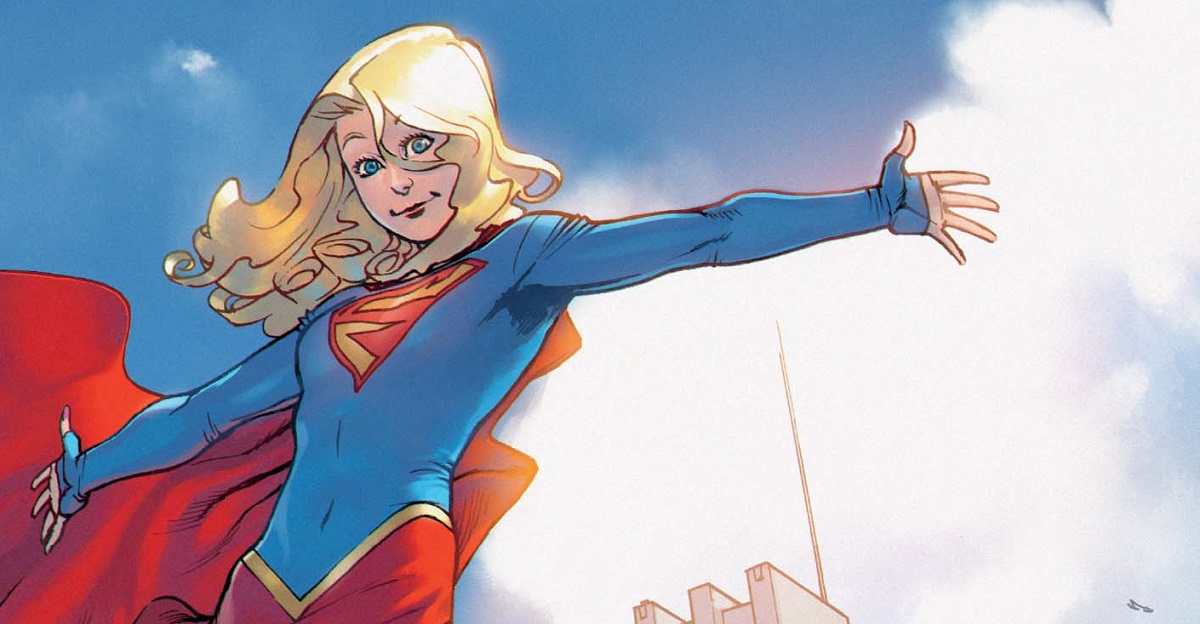

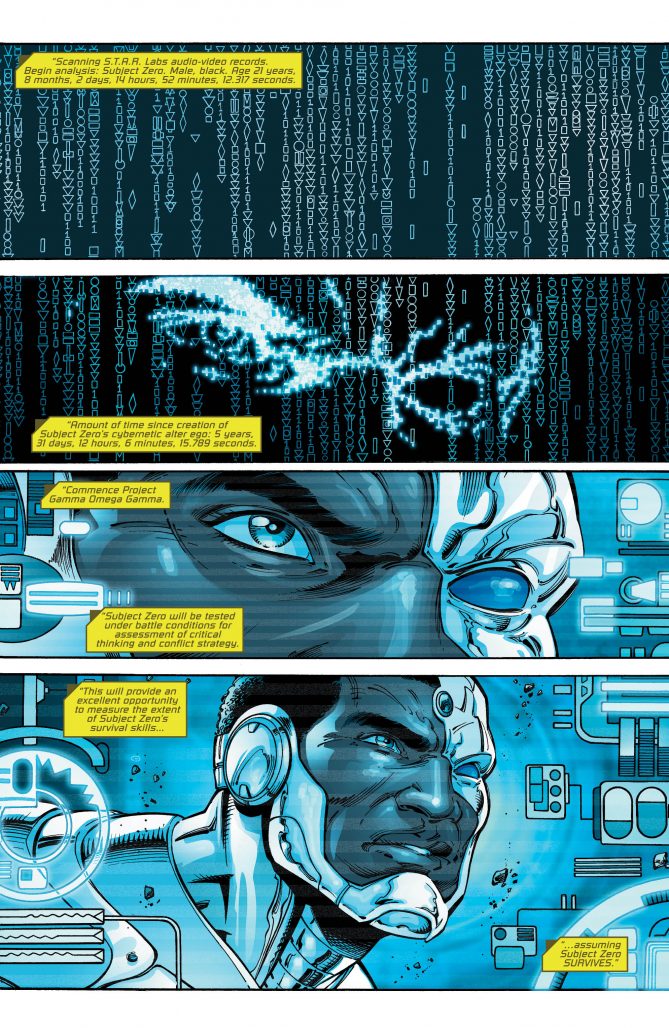
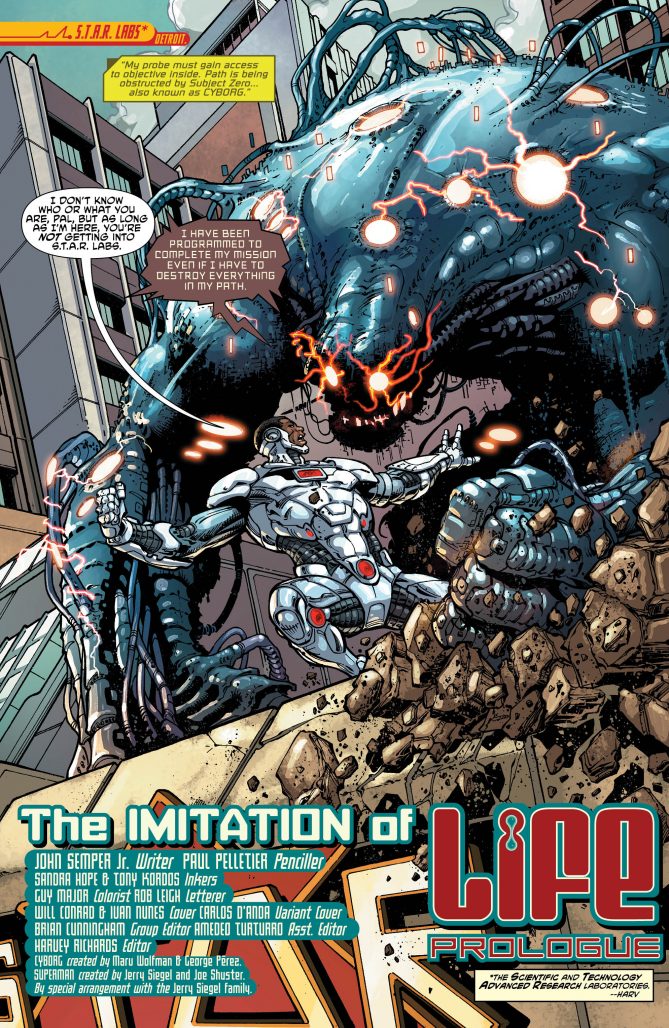
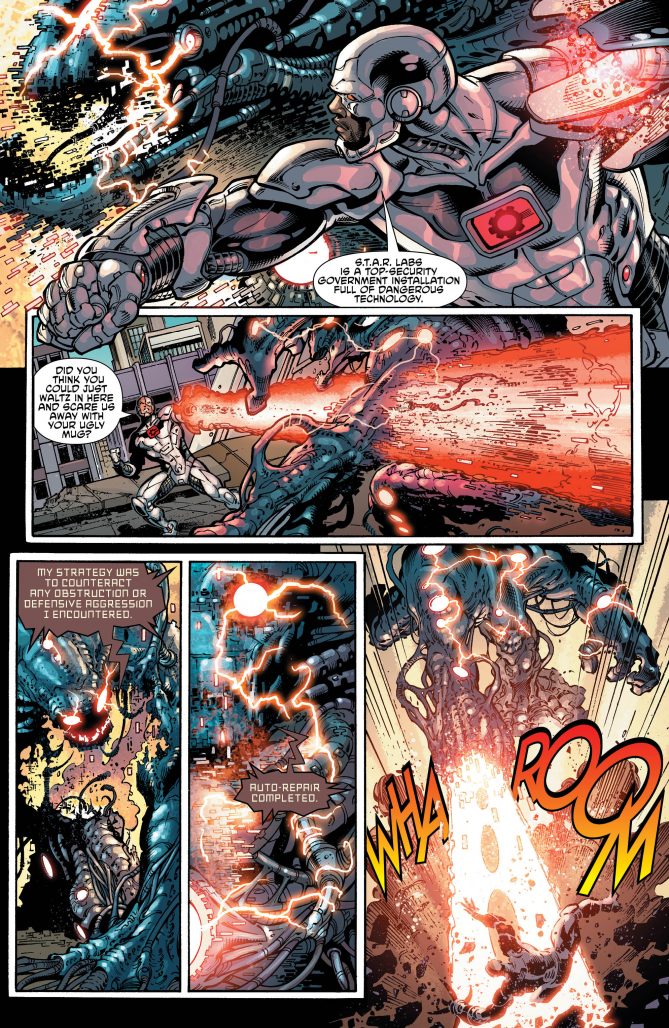
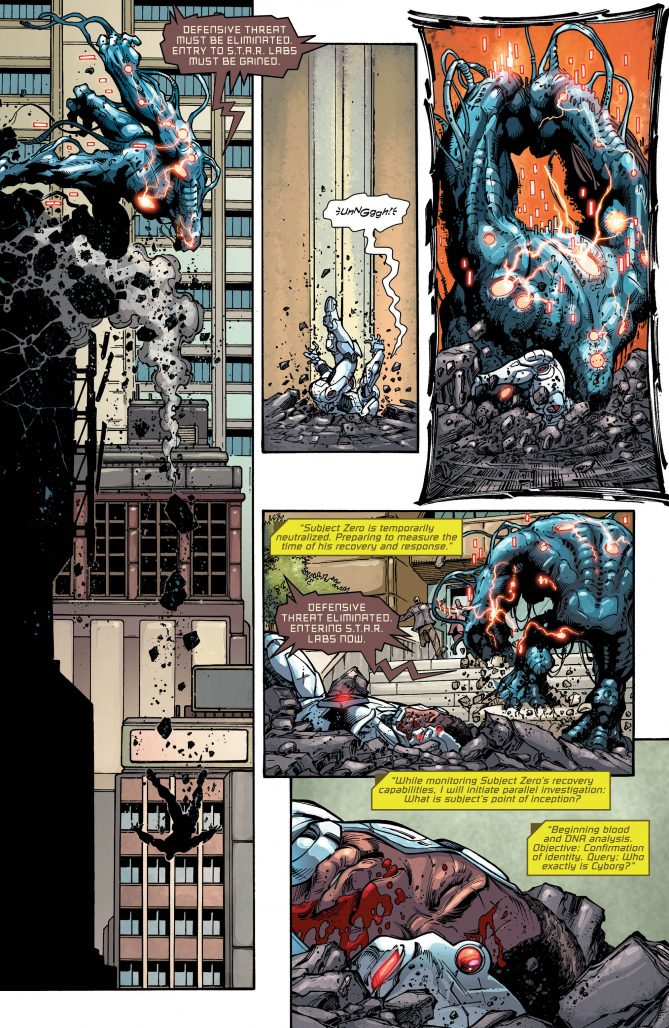
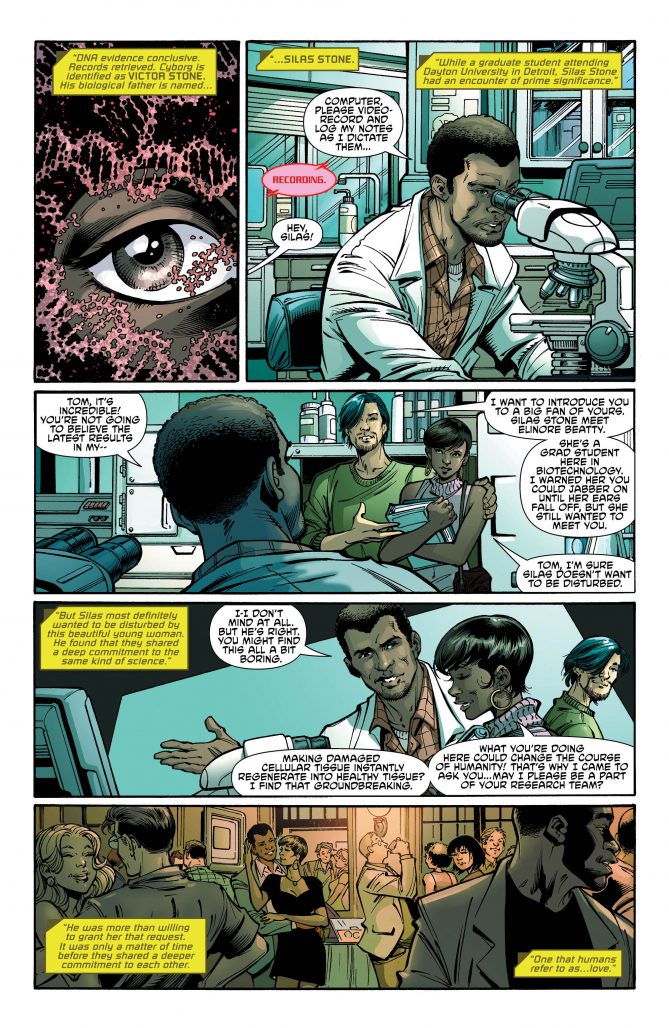
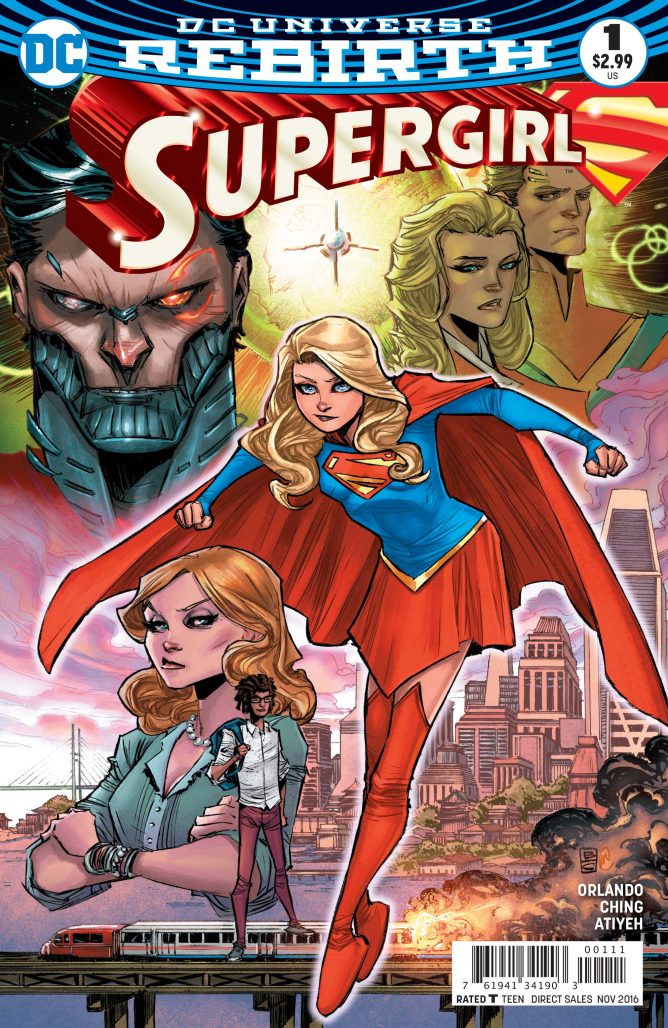
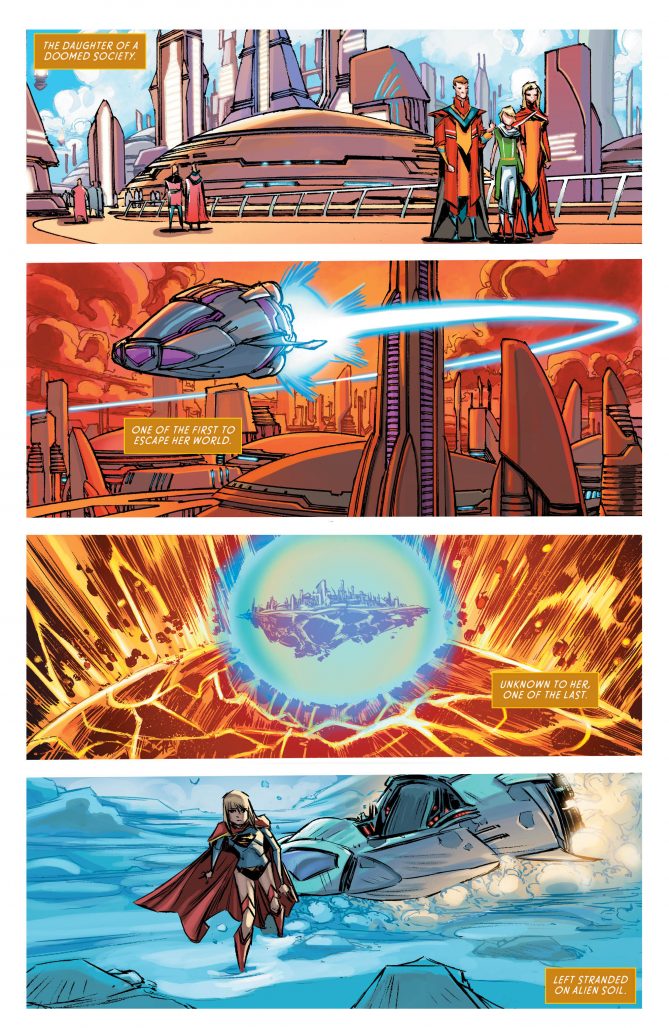
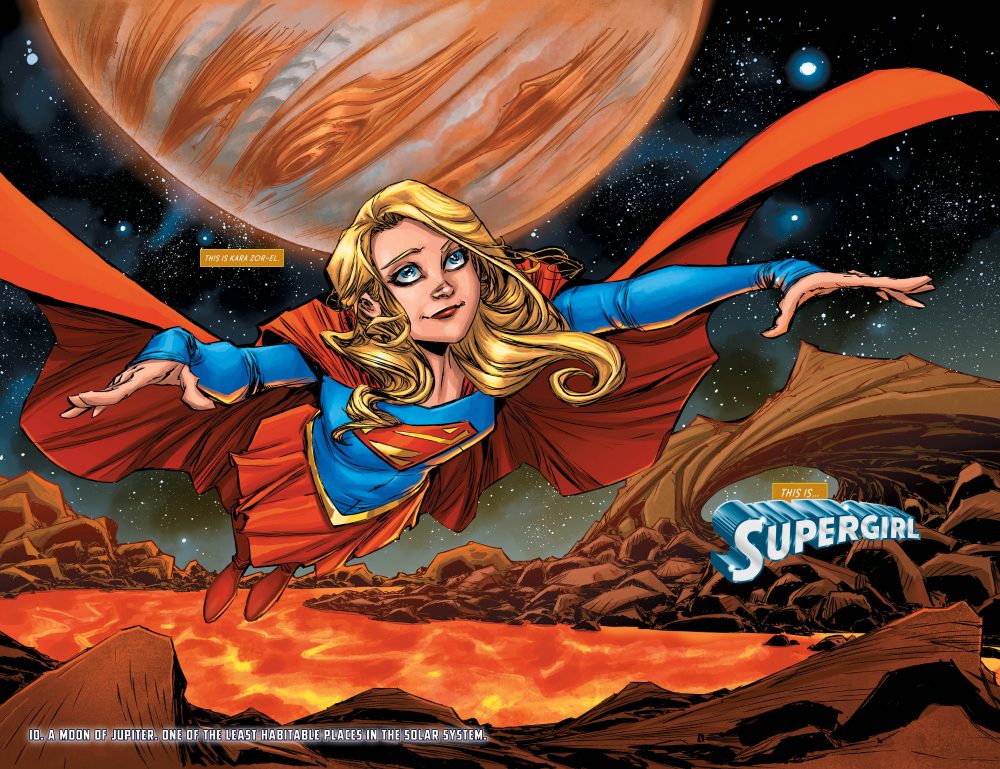
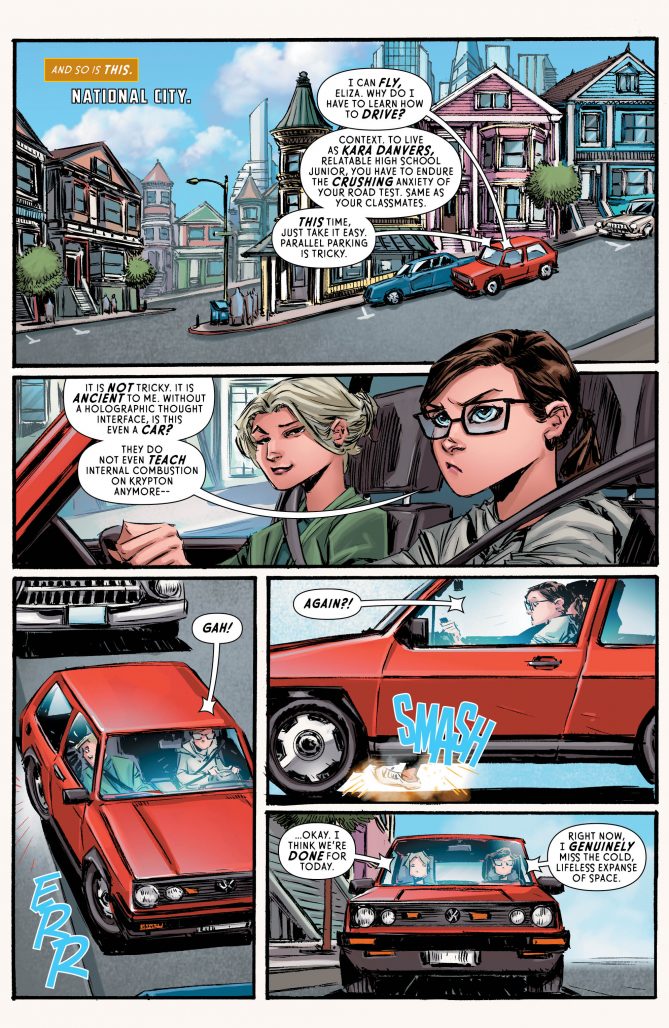
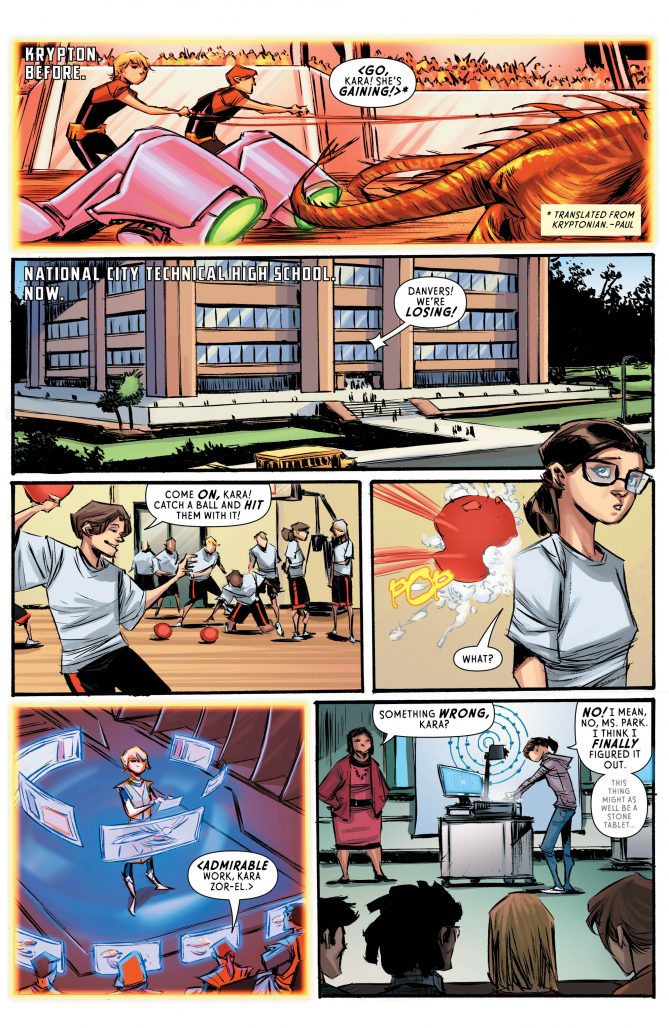
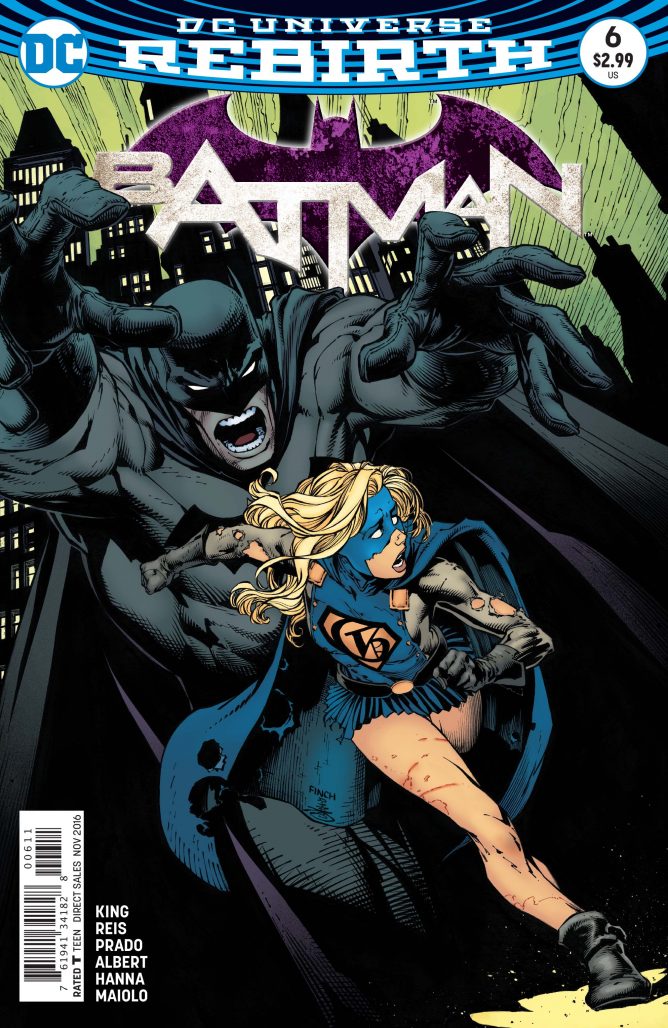
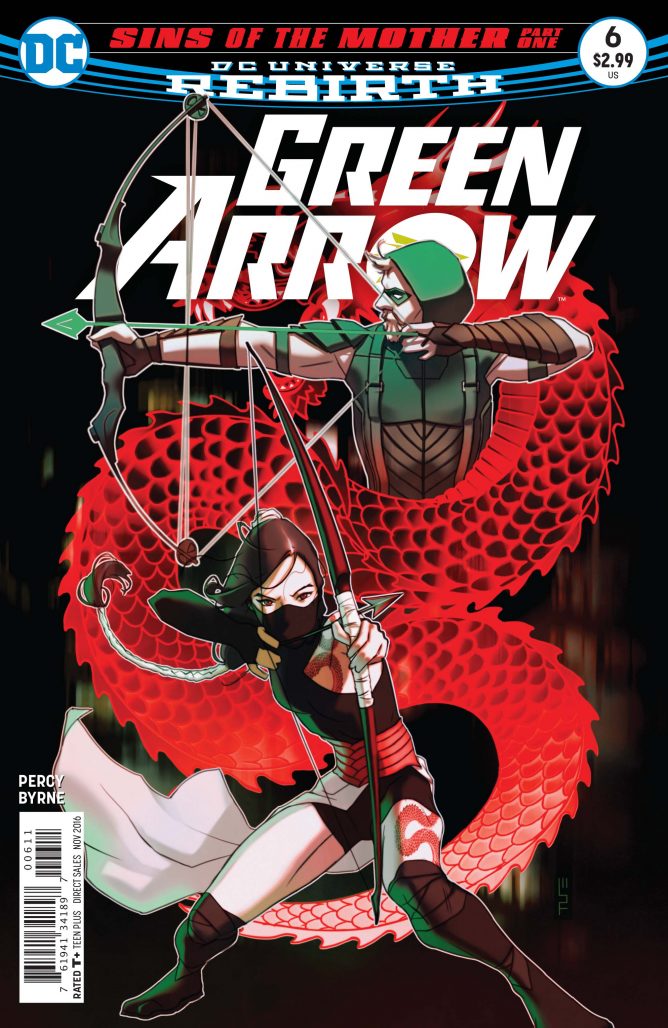





I just don’t think that opening page to All-Star Superman was such a brilliant idea in the first place–certainly not to the extent it’s been referenced by other creators–and it doesn’t improve with each iteration.
At least Tom King’s ASS homage had the payoff of a thematic reversal. If you must rehash a famous trick, try to add something new.
Any thoughts on Nightwing #4? Thought it was great. Added some nice insight to the characters, wrapped up its current arc before it got stale, and seeded things for the future.
I think Nightwing is pretty fun, and of the Bat-line, it’s firmly #3 for me (though, admittedly, the books that rank behind it are all quite poor).
Comments are closed.